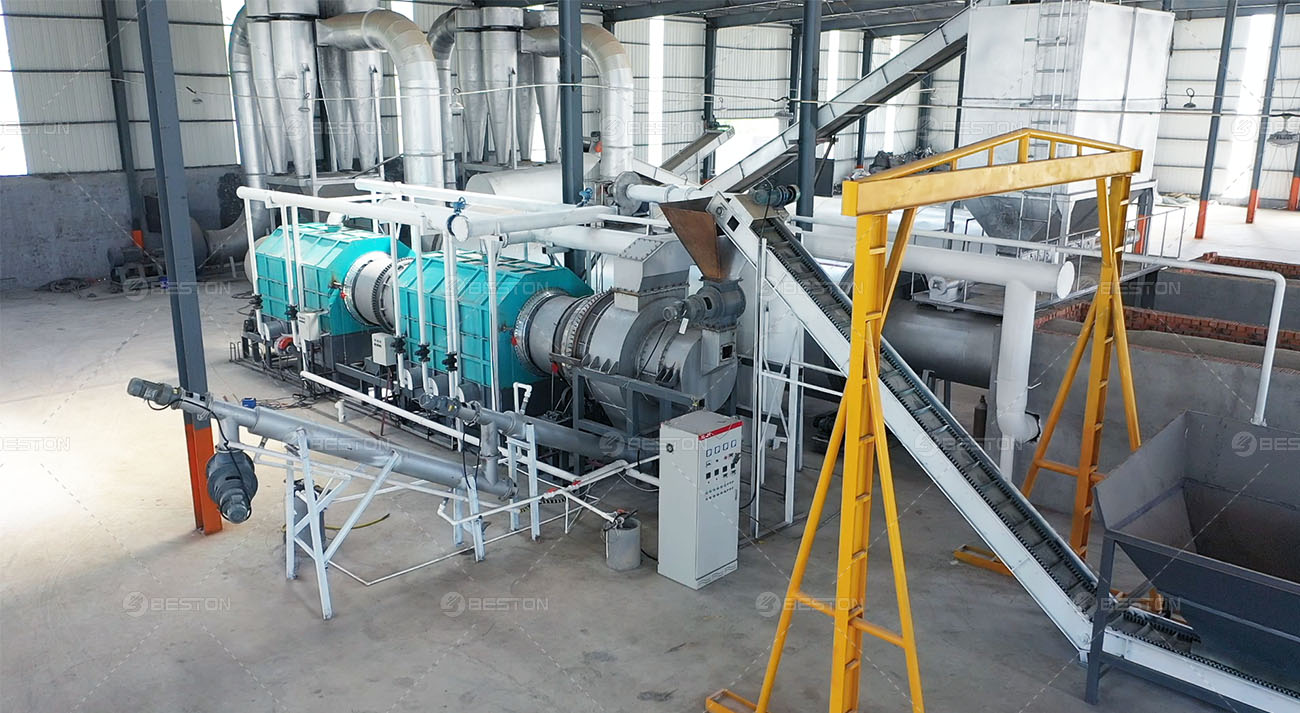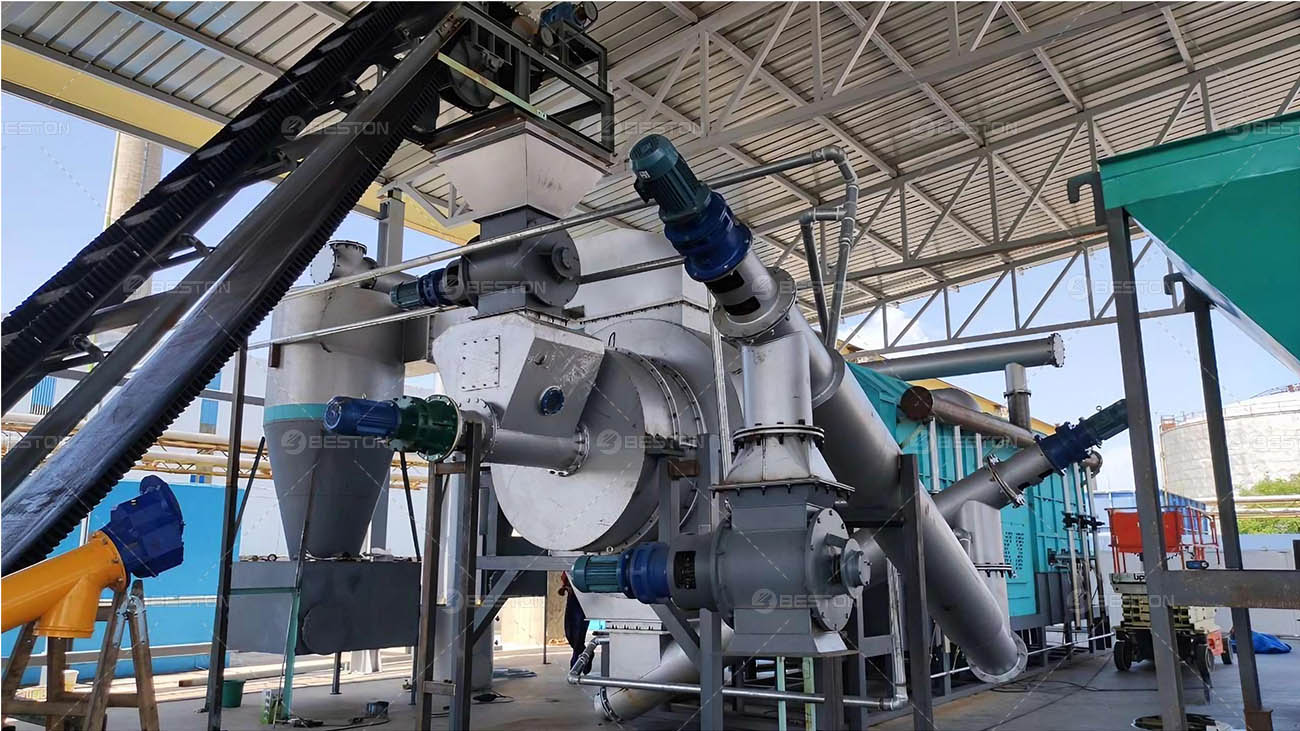In the realm of sustainable waste management, the effective handling of food processing waste stands as a paramount challenge. Two prominent contenders in this domain are pyrolysis and biodegradation. In this discourse, we dissect these methodologies, delving into the technical nuances and comparative efficacy of each.
Pyrolysis: The Technical Alchemy
Understanding Biomass Pyrolysis
At the heart of the pyrolytic process lies the biomass pyrolysis machine, a sophisticated apparatus designed to extract value from food processing waste through thermal decomposition in the absence of oxygen. This intricate dance of high temperatures and controlled environments results in the conversion of organic matter into biochar, liquid bio-oil, and combustible gases.
Biomass pyrolysis represents a departure from conventional waste treatment, transforming organic waste into valuable byproducts. The process mitigates environmental impact by minimizing the release of methane, a potent greenhouse gas associated with traditional waste decomposition.
Technical Landscape of Pyrolysis
The technicality of biochar equipment is underscored by the controlled heating of waste materials within the pyrolysis chamber. The absence of oxygen during the process prevents complete combustion, leading to the formation of biochar—a stable carbon-rich material used for soil enhancement.
The recovered liquid bio-oil, a complex mixture of organic compounds, finds applications in bioenergy production and chemical synthesis. Simultaneously, combustible gases, predominantly hydrogen and methane, contribute to the overall energy balance and can be harnessed for various industrial purposes.
Biodegradation: The Natural Decomposition
Navigating the Biodegradation Process
In stark contrast to the controlled environment of pyrolysis, biodegradation leverages natural processes to break down food processing waste. Microorganisms, such as bacteria and fungi, play a pivotal role in consuming organic matter, returning it to the environment in simpler forms.
The biodegradation journey begins with the enzymatic breakdown of complex organic compounds into smaller molecules. This intricate biochemical process ultimately yields water, carbon dioxide, and microbial biomass—a stark departure from the tangible byproducts of pyrolysis. Get more food processing waste recycling options: https://bestonasia.com/
Technical Evaluation of Biodegradation
The technical landscape of biodegradation hinges on microbial activity and environmental conditions. Factors such as temperature, moisture, and nutrient availability influence the pace and efficiency of the process. While biodegradation aligns with natural cycles, it is subject to variable timelines and may release methane during anaerobic conditions, posing environmental challenges.
Comparative Analysis
Environmental Footprint
In assessing the environmental impact, pyrolysis demonstrates an edge by minimizing methane emissions, a significant contributor to the greenhouse effect. The controlled conditions ensure efficient waste conversion with reduced atmospheric pollutants, offering a more environmentally conscious alternative.
Biodegradation, while natural, is contingent on external factors that may lead to varied outcomes. The potential release of methane during anaerobic conditions adds a layer of complexity to its environmental footprint.
Resource Recovery
Pyrolysis, with its tangible outputs like biochar, liquid bio-oil, and combustible gases, positions itself as a resource recovery champion. The versatile applications of these byproducts in agriculture, energy production, and industrial processes add intrinsic value to the waste.
Biodegradation, while effective in reducing waste volume, lacks the tangible resource recovery characteristic of pyrolysis. The end products are primarily intangible byproducts like water, carbon dioxide, and microbial biomass.
Technological Control
The biomass charcoal maker machine stands out for its precise control over variables like temperature and residence time, ensuring optimal conversion rates and byproduct yields. This technological control contributes to the scalability and reliability of the process.
Biodegradation, being reliant on natural processes, lacks the same degree of technological control. The variable nature of microbial activity and environmental conditions introduces uncertainties in its application, especially in industrial-scale waste management.

Conclusion: Navigating the Crossroads
In the evolving landscape of food processing waste recycling, the choice between pyrolysis and biodegradation hinges on the specific goals and priorities of waste management systems. Pyrolysis, with its technical precision and tangible resource recovery, offers a controlled and environmentally conscious alternative. On the other hand, biodegradation aligns with natural cycles but introduces uncertainties and lacks the same degree of resource recovery.
As industries and municipalities stand at the crossroads of these waste treatment methodologies, a comprehensive understanding of their technical intricacies becomes imperative. In navigating the intricacies of waste recycling, the choice between pyrolysis and biodegradation defines not only environmental impact but also the future trajectory of sustainable waste management practices.